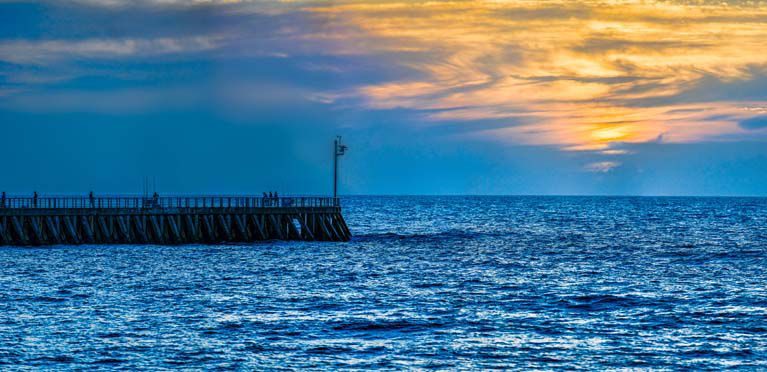
The Sebastian Inlet North Jetty, considered by some the best shore-accessed ocean fishery in the entire country, is open again, from end to end – apparently against the wishes of the Sebastian Inlet District Commission, which owns and maintains the jetty.
The commission planned to close the jetty at night last fall because of increasingly violent confrontations between fishermen on the jetty and those in boats entering or leaving the inlet.
Aggressive fishermen on the jetty fought over prime locations, usually after dark, and cast lines with lead weights and hooks onto passing boats. They also reportedly threw objects at boats, a violation of state law.
A heavy metal gate was fabricated and installed at the base of the jetty, and the nighttime closure was set to begin at sunset on Oct. 7, according to District Administrator Marty Smithson.
Before that could happen, though, Hurricane Matthew came along. On Oct. 6, a mandatory evacuation order went into effect, causing not just the jetty but the entire park to be closed.
As it blew by, the storm damaged 45 metal grates that form part of the walking surface of the jetty, making the outermost 150 feet of the 745-foot structure unsafe.
When the park reopened after the storm, district and park personnel were busy cleaning up and performing repairs. The nighttime closure never went into effect, but the district erected a chain link barrier to block the damaged part of the jetty.
Smithson says the Inlet Commission had planned to replace the temporary barrier with a durable structure, permanently closing the outermost 150 feet – where much of the conflict between fishermen had taken place – to the public.
But once District completed repairs to jetty, replacing the metal grates at a cost of $30,000, park personnel on May 11 removed the barrier and re-opened the outer section of the jetty to the public without consulting the District, according to Smithson.
The Park Service has since asked that the Inlet District Commission not carry out its plan to replace the temporary barrier with a permanent structure, and the commission has agreed.But Smithson is concerned that aggressive behavior and violence on the jetty will resume unless the Fish and Wildlife Service is able to fund a 24-7 law enforcement presence at the Inlet.
Only one day after the chain link fence was removed, Smithson relates, a fisherman on the jetty illegally cast a line across the bow of a boat piloted by a District surveyor who was gathering data in the inlet.
“We’ve tried signs, videos, brochures, but people visit the park from all over the world, often not knowing or understanding the rules. And some people just don’t care.”
Although the Jetty is inside Sebastian Inlet State Park, the Inlet District, which is responsible for keeping the ocean-to-lagoon boat-way open and in good repair, owns the jetty.
“It is strictly a navigational structure,” Smithson said of the jetty, which helps control water flow and sand drift to keep the inlet navigable. “Fishing out there is a [secondary usage and revocable] privilege. When we made the agreement to allow fishing, the chief park ranger carried a gun and was a sworn officer. That is no longer the case.”
He believes keeping order and enforcing laws and regulations on the jetty is the Park’s responsibility, and says “our board has been diligently trying to engage” with the Park Service. “We’ve been putting them on notice for 18 months. Their attorneys and our attorneys have been working on a new agreement,” focusing heavily on the issue of who would liable for property damage or injury on the jetty.
The Park Service was contacted for a comment on the situation at the jetty but did not respond by press time.



